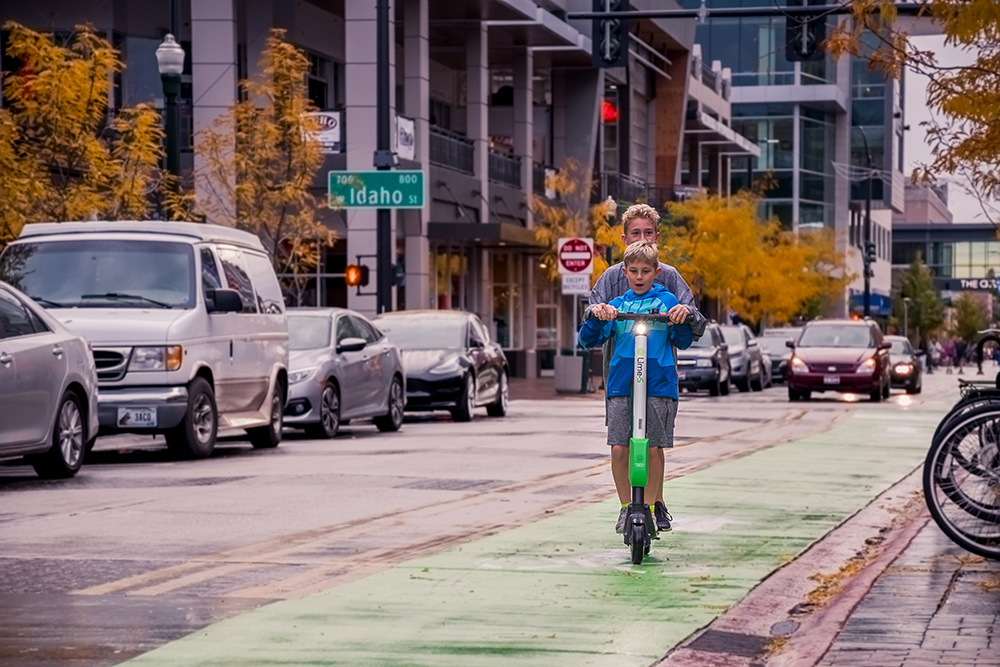
Photo courtesy of Brett Sayles on Pexels.
First-of-its-kind safe scooting study published.
The market share of e-scooters in the United States has boomed in recent years, but outside of hospitalization data, little has been known about how safe this mode of transportation is compared with bicycles and what is causing the most severe crashes. Now, for the first time, thanks to new research released by CEE Professor Chris Cherry and graduate student Nitesh Shah, city managers and policymakers will have data to make long-term decisions about their use.
In 2019, 86 million trips were made on shared e-scooters, which represents more than a 100 percent increase from the year before. Cherry and Shah took a closer look at e-scooter traffic safety, and their findings were just published and can be read in the Journal of Safety Research.

Chris Cherry
The study scrutinized police crash reports of 52 e-scooter and 79 bicycle crashes with cars in Nashville, Tennessee, from April 2018 to April 2020. Crashes between drivers and scooter riders make up 80 percent of scooter rider fatalities, so the authors focused on the analysis, which is of high importance for creating sound transportation policy.
The findings show one main similarity between e-scooter- and bicycle-motor vehicle crashes: that one in ten leads to the injury or fatality of the e-scooter rider or bicyclist. From there, the similarities start to fade. While the location of crashes is similar, mostly at intersections, the types of crashes vary considerably.
“When cars hit either a bicyclist or scooter rider, the injury usually occurs to the rider,” said Shah, who led the research. “We found that intersections are so important to transportation design, and that scooter riders on sidewalks are a really important factor to consider”
Scooter riders crash with drivers while coming off of sidewalks into driveways and crosswalks at a higher rate than bicyclists—more than half of scooters riders crash this way, about twice the rate as bicyclists. Most scooter and bicycle riders are locals, near to home, and most car drivers live outside the city center. Still, about one-third of scooter riders are tourists or visitors. Despite downtown Nashville being an entertainment hub, most scooter riders who were hit by cars were hit in the daytime, and alcohol was not a factor. Still, one in five drivers fled the scene of the crash.
—Chris Cherry
The results suggest that a generalized approach for e-scooter and bicycle safety might not be the most effective, and that any policies and safety campaigns might have more impact with more specific targeting.
The study was funded by the Collaborative Sciences Center for Road Safety. Cherry and Shah conducted a comprehensive analysis based on police crash reports, which relayed locations relative to sections of roads or intersections, as well as the maneuvers of the driver and rider. In addition to traditional descriptive analysis, they also used a recent prototype version of the Pedestrian and Bicycle Crash Analysis Tool to classify crashes.